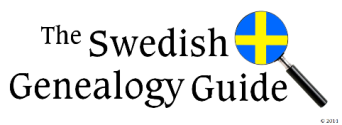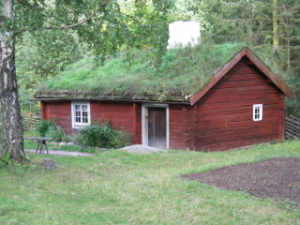In the middle of the 1800’s there were about 100, 000 torps (small farms) in Sweden with roughly 500,000 people living on them. At that time there were about 3.5 million people in Sweden, so about one seventh of the population was living on torps.
Torps in mid- and southern Sweden were usually leased from a larger farm. Torps in northern Sweden were often owned (as there was no large scale farming in the north.) Either way the torps generally did not have the best plots of land for farming. Sometimes they were used to break a new section of ground for farming next to a large farm, or from government owned land such as the Kronotorps in northern Sweden.
The Renting Torpare
If the Torpare (farmer who ran one of these small farms) rented the torp from a larger farm, then there was no property tax on the torp. The property or production taxes were associated to the larger farm. Rent for the torp could have been paid in goods or labor such as the day labor torp (dagsverkstorp.) Other terms for this kind of torp were Jordtorp or Stattorp. The day labor torps were abolished in 1943 when the Stattare system was dismantled.
Förpantningstorp meant it was a torp with possession rights for generally 49 years. As part of the contract the Torpare made a payment at the beginning in exchange for fewer obligations in day labor. Another type of torp was the undantagstorp which was in consequence to an inheritance or sale.
The Soldier Farm
Maybe you have heard of soldier farms? This was another form of torp. You might see the title Soldattorp, Ryttartorp, Båtmanstorp, or even Knekttorp in the records. These were small farms used for the soldiers of the Allotment System starting in the 1680’s. Primarily these farms provided residence for the soldier / or sailor (in the navy) and their family. The farm was too small to be self-sustaining so the local farmers with large farms were obligated to provide agricultural products and use of draft animals. In some parts of Sweden the soldier farm was given to the soldier at the end of military service. More commonly, the soldier and his family had to move after the discharge (or death) of the soldier.
Torps in the 1900’s
In the late 1800’s there was a massive emigration from Sweden, plus migration to the cities due to the industrial revolution, and the practice of the military Allotment System and its soldier farms was discontinued. With so much change in society, many of the torps were converted into summer cottages in the early 1900’s. Other summer cottages were built in the early 1900’s as the population grew. The newer cottages were given newer names, while many of the older torps were re-named by new owners to dis-associate from the social stigmas of the old torps. This re-naming can be one reason why you have a hard time finding the location of an older torp on a modern map. Gratefully there is an abundance of historic maps for Sweden. You can use historic maps to find the location of an older torp and then try to find the same place on a modern map.
Source: Börja forska kring ditt hus och din bygd by Per Clemensson and Kjell Andersson, Natur & Kultur, Stockholm, 2011 pages 80 – 90.
You can learn more about historic maps of Sweden at: https://familysearch.org/learn/wiki/en/Historical_Maps_of_Sweden
Photo by GFröbergMorris, Soldiers cottage at Skansen outdoor cultural history museum, Stockholm 2008.

